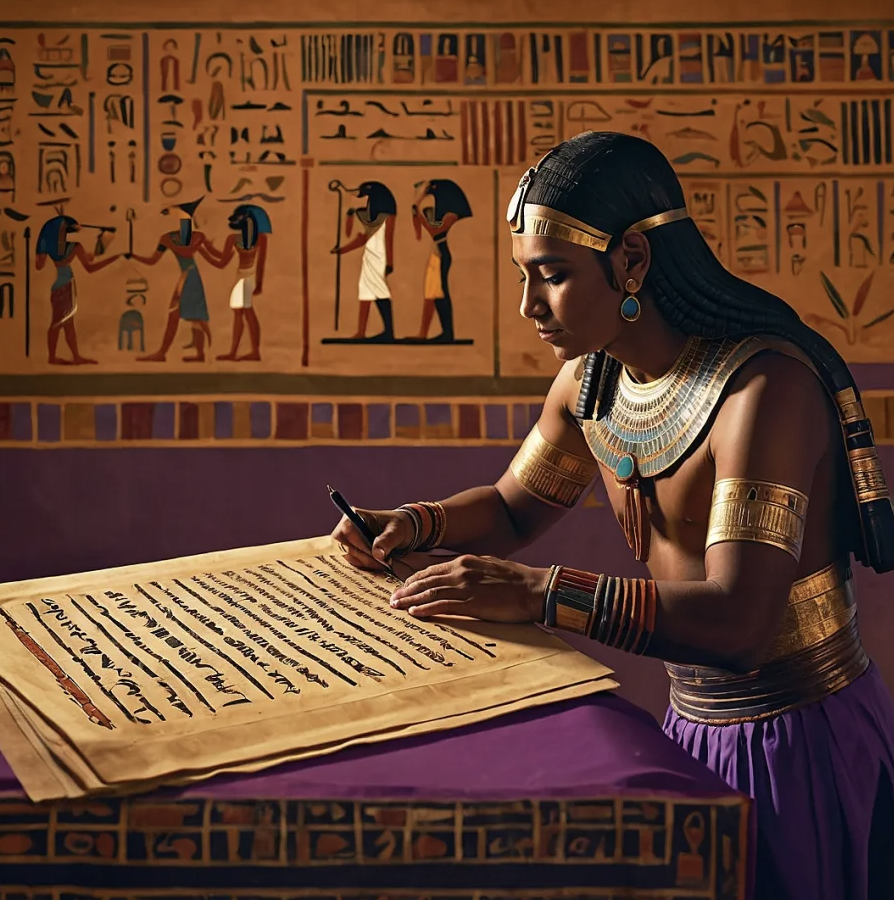Tokenization is oft-referred to as the Holy Grail of the Web3 and NFT industry, although its use cases tend to seem great in theory, yet rarely practiced.
That’s because not everyone understands what tokenization really is, and if they do, find their use cases a little iffy.
Let’s start from macro to micro. Before we get to tokenized pages and books, let’s talk about tokenized houses and castles.
This is how tokenization works:
What are Tokens?
Let’s get something out of the way: smart contracts. A crypto smart contract is like a digital agreement that automatically executes actions when certain conditions are met.
It’s like a computer program that runs on the blockchain, enforcing rules and managing transactions without the need for intermediaries. Smart contracts make blockchain applications more automated, secure, and transparent.
Okay, with that on the table, it’s time to define tokens. Turns out that tokens are simply smart contracts that follow specific rules. When someone says “tokens”, it’s more like a fancy way of referring to smart contracts, with the difference that these are actually used for transactional purposes.
That’s because tokens are easier to use, trade, and verify independently, and can be customized depending on the project’s needs: they can serve as currency or to provide access to certain benefits.
There are different token types, like ERC20 and ERC721 on Ethereum, which handle things you can trade and unique items, respectively.
With that clear, let’s delve deeper. Certain assets, like digital files, can be turned into tokens.
But so can real-life objects, through a process called asset tokenization.
What is Asset Tokenization?
Asset tokenization involves converting real-world assets, such as real estate, stocks, artwork, or commodities, into digital tokens on a blockchain. Basically, all of these tangible, real-life objects now have their equivalent in smart contracts that execute certain functions.
For example, let’s consider a commercial property, such as an office building. The commercial property is assessed and divided into digital tokens. Each token represents a percentage ownership stake in the property.
If the property is divided into 100 tokens, owning one token equates to owning 1% of the property. These tokens automatically provide the holder with things like rental income of the space, voting rights in property management decisions, or legal ownership as long as the token is in their possession.
If they have the token, then they have the contract. Transparent reporting mechanisms ensure that investors receive timely and accurate information about the performance of the asset.
Benefits of Asset Tokenization
Asset tokenization allows real estate assets such as residential properties, commercial buildings, and even land parcels to be divided into digital tokens representing fractional ownership.
Investors can purchase these tokens, gaining exposure to real estate markets without the need for large capital investments or the hassles of property management.
Now, where can you find the tokens, and how do you, you know, hold them? They’re evidently not physical assets that you can hold as easy as, say, a cellphone.
Usually, tokens are created and issued on a blockchain platform, where there’s another smart contract used to automate the token issuance and management process.
And they’re typically held in crypto wallets, which are software applications that securely store cryptographic keys used to access and manage almost all Web3-related products: cryptocurrencies and other tokens.
Obviously, you’d need to have a wallet in the first place to purchase the token of the tokenized asset you’re interested in, but creating a wallet is easier than it seems.
Composability
In simple terms, Web3 composability means that developers can use pieces of existing software and combine them to create new programs.
It’s like building with Lego blocks – you take different pieces and put them together to make something new. This makes it easier and faster for developers to create new applications, giving them more tools to work with.
Now, since asset tokenization allows real-world assets to be represented as digital tokens on a blockchain, this means that the tokens can also be used as part of decentralized finance (DeFi) applications.
In DeFi, users can use these tokens as collateral to borrow or lend money, earning interest on their assets. This connects the value of real-world assets to the DeFi ecosystem, making it easier for people to invest in these assets and earn returns. It also makes the DeFi space more liquid and accessible to everyday investors.
Now, let’s discuss some use cases of tokenized assets for authors:
Tokenization Use Cases
Crowdfunding
We discussed the benefits of NFT crowdfunding for authors in more detail in this post, but basically the rule of thumb is that token holders may receive dividends or other incentives based on book sales or royalties.
You hold a token, you get some kind of benefit, specified by the author. It could be access to a special Discord, or to a Patreon community where the author interacts every other week with their members.
On top of that, authors have the possibility of tokenizing their upcoming books, allowing readers and investors to purchase tokens representing a stake in the book’s success, and helping the writer build up some cash to actually finance the book.
Memorabilia associated with the author’s literary works can also be tokenized. For example, tokens representing limited edition or autographed copies of books could be issued, allowing collectors to own and trade these digital assets on blockchain-based marketplaces.
Numerous assets with significant potential returns remain beyond the reach of ordinary investors due to financial or regulatory constraints. In such scenarios, tokenization offers benefits akin to crowdfunding, albeit within a framework where the group of investors funding or purchasing an asset also share in the financial gains from their involvement.
This provides smaller investors with a pathway to invest in riskier yet potentially lucrative assets with modest capital.
This leads us to our next point, the proliferation of a secondary market precisely for literary memorabilia.
Tokenization Creates a Secondary Market
Reselling most literary products is a hassle – most people won’t care about a physical signed copy of an author they don’t know, if there’s not any demand for it. But think about it in another way: if you were to purchase a tokenized copy of a signed book of an unknown author valued $100 and sell it for $1,000 in less than a week, you’d probably be more interested.
Sounds too good to be true – how will a relatively unknown author’s copy fetch such a price in a resale market?
That’s because, while it was this author’s first book, they’ve been hyping up their Web3 community by releasing high-quality art illustrations of their book characters, an audio recording of them reading the book in two languages, and several exclusive chapterz through NFT airdrops.
By the time they drop the signed books, people have been flipping their other products on the resale market for months, making their signed copies incredibly valuable.
That’s one of the possible use cases of tokenization: the creation of a secondary literary market where investors can buy, sell, or trade tokens representing ownership rights to literary works.
These secondary markets could provide liquidity and price discovery for literary assets, allowing investors to speculate on the future value of books and other literary properties.
Through the trading of tokens representing ownership rights, investors can determine market prices for specific works, allowing for more transparent and efficient price discovery. Literary tokens can complement traditional asset classes such as stocks, bonds, and real estate, providing investors with exposure to the cultural and creative industries.
Furthermore, the liquidity of the whole literary ecosystem is automatically boosted when there’s a secondary market.
Tokenization Improves Liquidity
Traditional real estate investment often requires large sums of money to purchase entire properties, making it inaccessible to many investors. However, tokenization offers a solution by fractionalizing ownership, allowing individuals to invest in portions of real estate assets. For example, consider a luxury villa in a popular tourist destination.
The villa generates rental income of $10,000 per month from vacationers. Previously, investors would need to buy the entire villa to participate in this income stream. However, through tokenization, the villa is tokenized into digital tokens, with each token representing a percentage ownership stake in the property. Let’s say the villa is divided into 100 tokens.
An investor can purchase any number of tokens, depending on their investment budget. For instance, buying 10 tokens would entitle the investor to 10% ownership of the villa and 10% of the rental income.
The rental income generated by the villa is distributed proportionally among token holders. In this case, if the monthly rental income is $10,000 and the investor owns 10 tokens, they would receive $1,000 per month in rental income.
By fractionalizing ownership of the villa, tokenization allows investors to access real estate opportunities with smaller investment amounts. This democratization of investment opportunities enhances liquidity in the real estate market, as more individuals can participate in asset ownership and benefit from income streams previously reserved for large investors.
These tokens can then be traded on platforms like OpenSea or Rarible, allowing more people to invest in the artwork without having to buy the whole thing. This boosts liquidity, making it easier to buy and sell shares of the artwork, while still tying the tokens to the original masterpiece.
Tokenization makes it easier to buy and sell assets that are usually hard to trade. Instead of buying the whole thing. This saves money by cutting out expensive middlemen and makes it simpler to find buyers and sellers for the tokens, while still linking them to the original asset.
Let’s take a look at what things a writer could tokenize if they wanted to make more money:
Tokenized IP Rights
Intellectual property rights, including patents, trademarks, and copyrights, can be tokenized to facilitate licensing, royalties, and investment opportunities. Tokenization enables creators and rights holders to monetize their intellectual assets more efficiently and transparently.
How to Tokenize Real-World Assets?
To tokenize assets, you’d probably use specialized software like Chainlink. Using Chainlink technology, you follow these steps:
- Choose the asset you want to tokenize.
- Decide if it will be a regular token or a unique one, and pick the right standard, like ERC20 or ERC721.
- Select a blockchain to issue the tokens on, like Chainlink’s Cross-Chain Interoperability Protocol (CCIP) for compatibility.
- Set up connections to real-world data sources to verify the asset’s value and use Proof of Reserve (PoR) to ensure it’s backed by real assets.
- Create and release the tokens using smart contracts. This process may vary depending on your specific needs.
Overall, Chainlink’s tech makes tokenizing assets easier and more reliable, connecting real-world assets to the blockchain in a secure and transparent way.
The Bottom Line
Now the hype around tokenized assets seems a bit clearer: people are going nuts over the possibilities, but are still too scared to try them.
Even more scared are writers and literary investors, who still tread around Web3 and NFTs lightly.
At the end of the day, tokenization presents numerous advantages for asset holders, investors, and the financial landscape, while also addressing ecological concerns such as carbon rights.
Time will tell if writers and literary investors will pick up on these, but seems like things are going in the right direction even now.




